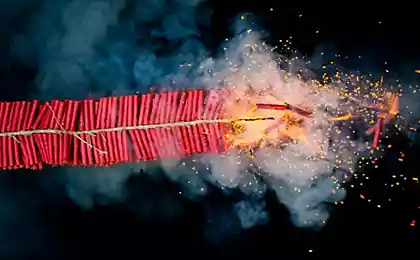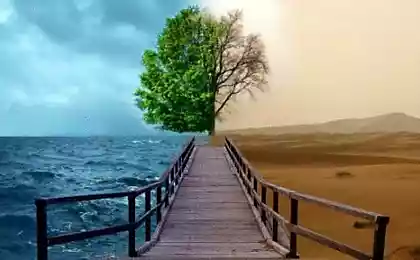184
Resource-saving agriculture – a chance for the future
Five main features. With climate change and the need to feed nine billion people by 2050, resource-saving agriculture (RSA) is critical to future food security. Below are five basic facts you need to know.
1. RSH is based on the observance of three main principles that should be remembered:
Direct sowing through vegetation means that crops are grown without mechanical preparation of beds and minimal disruption of soil cover after the previous harvest. Permanent soil cover is necessary to protect the soil from the destructive effects of precipitation and sun; continuous feeding of micro- and macro-organisms in the soil, as well as to change the microclimate in the soil to ensure optimal growth and development of soil organisms, including plant roots. Crop rotation is necessary not only for the diversity of the “ratio” of feeding soil microorganisms; because they inhabit different soil levels, they receive nutrients from different soil layers.
2. RSH helps fight climate change
We should not give up efforts to reduce greenhouse gas emissions just because climate change is becoming more and more perceptible. Due to the increase in organic matter in the soil with resource-saving agriculture, soils are able to absorb carbon from carbon dioxide and store it in a reliable manner for a long time.
Also, in the case of environmentally friendly agriculture, the consumption of fossil fuels is significantly reduced and stubble is completely eliminated, which also contributes to reducing greenhouse gas emissions.
3. RSX offers opportunities for smallholder farmers to diversify
RSH gives direct results that allow you to turn the daily and seasonal calendar and in the long run to change the rhythm of life of family farmers by reducing labor costs for plowing, preparing land and weeding. With the increase in leisure time, there is a real opportunity to try various types of diversification, for example, to engage in poultry farming or direct release of products from the farm, or the creation of non-agricultural small businesses.
FAO advocates supporting smallholder agriculture to increase production. Forms of support include land ownership, global policies to create a level playing field, access to capital and markets, targeted training and investment in technology and infrastructure.
4. RSX helps reduce energy consumption and labor costs on farms
One of the most tangible changes for farmers is the reduction of energy and labor costs on the farm. RSX helps reduce overall farm energy needs and field energy costs by nearly 60 percent compared to traditional farming practices.
This is due to the fact that the most energy-intensive operations, such as plowing, are eliminated. In addition, the need for additional investment in machinery, in particular in the number of tractors and their size, is significantly reduced. This applies equally to small-scale farms, where only manual labor or animal traction is used.
5. Everyone can do their part.
Maintaining the inertia of agricultural productivity growth in the coming decades will remain crucial, given the need to increase production of basic crops by 60 per cent to meet projected demand growth.
Food is one of the most pressing needs, so countries, businesses, and consumers can all do their part, whether by reducing food loss and waste, switching to diets that are less harmful to nature, or investing in sustainable agriculture, such as resource-saving agriculture.
Source: agracultura.org/
1. RSH is based on the observance of three main principles that should be remembered:
Direct sowing through vegetation means that crops are grown without mechanical preparation of beds and minimal disruption of soil cover after the previous harvest. Permanent soil cover is necessary to protect the soil from the destructive effects of precipitation and sun; continuous feeding of micro- and macro-organisms in the soil, as well as to change the microclimate in the soil to ensure optimal growth and development of soil organisms, including plant roots. Crop rotation is necessary not only for the diversity of the “ratio” of feeding soil microorganisms; because they inhabit different soil levels, they receive nutrients from different soil layers.
2. RSH helps fight climate change
We should not give up efforts to reduce greenhouse gas emissions just because climate change is becoming more and more perceptible. Due to the increase in organic matter in the soil with resource-saving agriculture, soils are able to absorb carbon from carbon dioxide and store it in a reliable manner for a long time.
Also, in the case of environmentally friendly agriculture, the consumption of fossil fuels is significantly reduced and stubble is completely eliminated, which also contributes to reducing greenhouse gas emissions.
3. RSX offers opportunities for smallholder farmers to diversify
RSH gives direct results that allow you to turn the daily and seasonal calendar and in the long run to change the rhythm of life of family farmers by reducing labor costs for plowing, preparing land and weeding. With the increase in leisure time, there is a real opportunity to try various types of diversification, for example, to engage in poultry farming or direct release of products from the farm, or the creation of non-agricultural small businesses.
FAO advocates supporting smallholder agriculture to increase production. Forms of support include land ownership, global policies to create a level playing field, access to capital and markets, targeted training and investment in technology and infrastructure.
4. RSX helps reduce energy consumption and labor costs on farms
One of the most tangible changes for farmers is the reduction of energy and labor costs on the farm. RSX helps reduce overall farm energy needs and field energy costs by nearly 60 percent compared to traditional farming practices.
This is due to the fact that the most energy-intensive operations, such as plowing, are eliminated. In addition, the need for additional investment in machinery, in particular in the number of tractors and their size, is significantly reduced. This applies equally to small-scale farms, where only manual labor or animal traction is used.
5. Everyone can do their part.
Maintaining the inertia of agricultural productivity growth in the coming decades will remain crucial, given the need to increase production of basic crops by 60 per cent to meet projected demand growth.
Food is one of the most pressing needs, so countries, businesses, and consumers can all do their part, whether by reducing food loss and waste, switching to diets that are less harmful to nature, or investing in sustainable agriculture, such as resource-saving agriculture.
Source: agracultura.org/





















